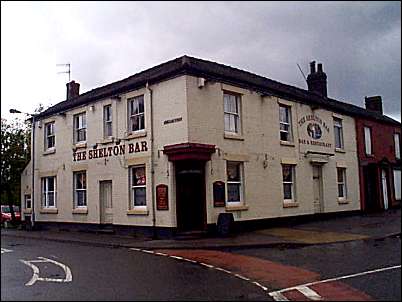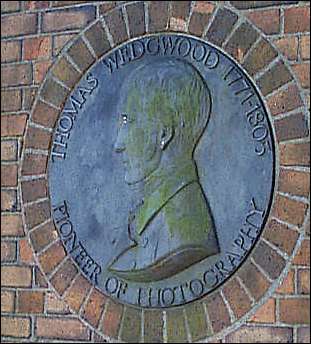|

The Shelton Bar pub -
Etruria
“It must have been an important pub when it first opened due to its
nearness to Etruria Station,” says current landlady 28 year-old Cheryl
Sylvester. “I’ve spent most of my life in Cavour Street and even in that
short period the changes have been immense.”
Even as a child Cheryl can’t remember Shelton Bar works when it was
operating. But she can remember her pub being named the Shelton Bar.
“For some reason they changed the name Railway Hotel to Shelton Bar. You
can still see it etched in one of the windows. When the Garden Festival
closed and the new Etruria Road was opened, the old Lord Street was
buried. It was at this time that the pub changed its name again, to the
Rendezvous,” Cheryl recalls. “When I took over the tenancy two years ago
it was run-down and the brewery decided to call it the New Rendezvous to
make a fresh start.”
Etruria was certainly a place for pubs. Former resident, Jack Whitehouse,
often mused over old times in Etruria with me.

The Bridge Inn - Etruria
“The Bridge Inn stood next to the canal; the Etruria Inn was next door,”
he recalled. “Then the Vine, the Railway, the Lamb, the Navigation, the
Eagle and Child and the Rose and Crown. The furnace workers were great
imbibers rushing from their shift at 2 o’clock to the pubs where they’d
drink as much as they could in the remaining minutes before closing.”
|
Jack told me his uncle was a furnace worker who was killed when he
drunkenly stepped off the Vine’s pavement in front of a car.
Naturally Cheryl doesn’t remember such colourful times but she says, “My
dad told me how all the pubs lined up pints at the end of the shift at
Shelton Bar. The end of industry caused the end of all those pubs. The New
Rendezvous is the last of them.”
The New Rendezvous remains a quaint hostelry. In an attempt to recapture
the industrial atmosphere imitation steel girders are suspended above the
bar. Sadly the present location fails to match the mood. Nevertheless the
former Railway Hotel is an impressive edifice, looking every bit as a
typical Victorian railway hotel should.
“Everything’s changed around here now,” says Cheryl. “New houses have
replaced old industry. I remember there being four giant gas holders
standing in the gasworks. Now there’s one which I think is just an emblem
of the past. My clearest childhood memories are the times I played in
Etruria Park. Even that has changed, although I think much for the
better,”
The 11 acre park was built on a triangle of land between Lord
Street, Etruria Vale Road and the Trent and Mersey Canal. Historian Steve
Birks has researched its origins.
“Industry virtually wiped the lovely Etruria Grove off the map,” he
says. “In Wedgwood’s time it was idyllic, but it’s prominence as a
gateway and proximity to key communications networks, brought factories
to the area in abundance. To compensate for this Hanley Corporation
decided to open a park. The ceremony took place in September 1904 at a
purchase cost of nearly £5,000. A carriage drive led from the three main
gates crisscrossing the central point from which were laid a bowling
green and tennis courts. But the main position of interest was just
inside the gates off Lord Street where an ornamental drinking fountain
was erected by the town mayor Henry Shirley and his elder brother Jesse
Shirley, the famous flint millers and bone grinders.”

ornamental drinking fountain
Sadly the fountain has seen better times and has been seriously damaged by
years of industrial pollution and neglect. The other artefact of note is
the plaque that was erected to commemorate the services of Thomas Wedgwood
to photography.
“Thomas Wedgwood was the fourth son of the potter Josiah Wedgwood and was
born at Etruria Hall in 1771. He was an early experimenter in
photography,” says Steve. “As a young man he was treated for consumption
at a Bristol clinic where he met Humphry Davy who published
Wedgwood’s experiments with silver nitrate that captured images onto
permanent mediums. This event essentially was the birth of photography as
we know it today.”

Near to the entrance of Etruria Park from the main road the Society of
Staffordshire Photographers unveiled a bronze plaque to mark this event in
1953.
“Of all the parks in Stoke on Trent,” recalls Steve, “Etruria once had the
greatest mix of education and recreation facilities. It had one of the
highest children’s slides in the Potteries. But, along with the witches’
hat, it was removed in the 1970’s as it was considered to be too dangerous
for kids.”
![]()
![]()
![]()